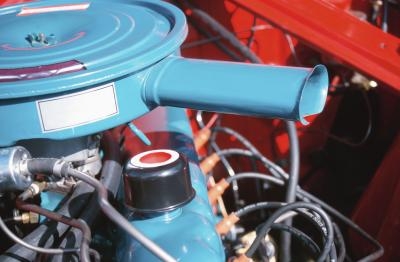
One of the first symptoms you will notice when the carburetor is leaking is that your car starts, but then stalls almost immediately. On close inspection, you may even notice a strong fuel odor under the hood. Rub your fingers around the carburetor body and you may find a wet spot. Take care of the problem by tracing the leak source to a few common leak-prone spots around your carburetor. Then fix it in your garage using a few tools.
Inspect the fuel inlet hose closely. If you notice a wet spot around the hose where it joins the carburetor fitting, or the hose has become swollen, soft, brittle or hard, replace the fuel hose and the small fuel filter inside the carburetor fitting. Install a new worm clamp to tighten the new fuel hose to the fitting. Use a Phillips screwdriver.
Check for a fuel leak around the accelerator-pump cover assembly. Some carburetor models come equipped with a diaphragm-accelerator pump on the side of the unit. If the cover screws have come loose, fuel will leak through the diaphragm and external cover. Look for a square cover on the side of the carburetor and tighten the cover mounting screws at each corner with a Phillips screwdriver.
Look around the gasket located between the carburetor upper body and the main, or lower body. This gasket may have worn out or the carburetor upper body mounting screws may have become loose, allowing fuel to leak outside the carburetor.
Ensure the upper body mounting screws are tight, if you found a leak. If they are tight, remove the clip holding the throttle linkage to the carburetor with a pair of needle-nose pliers and reposition the linkage to the side. The linkage allows the driver to operate the throttle plates in the carburetor through a cable when depressing the accelerator pedal. Unfasten the screws holding the carburetor upper body from the main body with a ratchet, short ratchet extension and socket. Remove the old gasket and install a new one.
Inspect around the bottom of the carburetor where it joins the intake manifold if no leaks were found around the gasket located between the carburetor upper body and the main, or lower body. If you find a wet spots or marks around the bottom of the carburetor, the base plate gasket is leaking. Remove the upper and main carburetor body using a ratchet, short ratchet extension and socket. Install a new base gasket and replace the carburetor assembly.